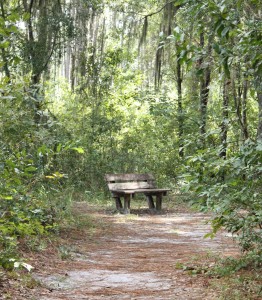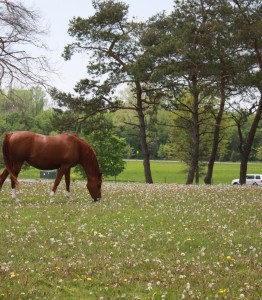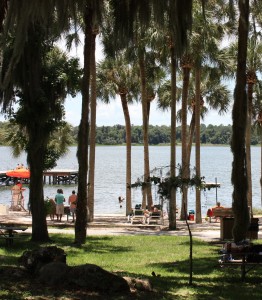 Drought-induced compositional shifts in U.S. forests and their effects on forest carbon storage
Drought-induced compositional shifts in U.S. forests and their effects on forest carbon storage
More frequent and intense droughts are projected in many subtropical land regions over the next century, including the southern U.S. Even in regions where declines in mean annual precipitation are not expected, increases in temperature and seasonal precipitation variability suggest the potential for an increased frequency and severity of drought events. This trend is expected to cause shifts in the relative competitive abilities of different species and lead to changes in forest community composition. The compositional shift may also affect the forest carbon cycle. I am investigating how quickly and widely these changes are happening, and may happen in the future, using both empirical and theoretical approaches. I am analyzing forest inventory data, soil, and historical climate data to quantify temporal trends in tree species composition in U.S. forests in relation to regional climate change. I am also using a next-generation dynamic global vegetation model (DGVM) to study how climate change is expected to affect the relative competitive abilities of different plant strategies, and how compositional shifts will affect forest carbon storage.
 Role of biodiversity in determining forest carbon cycle and ecosystem resilience
Role of biodiversity in determining forest carbon cycle and ecosystem resilience
Biodiversity has been shown to have important consequences for ecosystem functioning. However, there is little quantitative understanding of how plant functional diversity affects the forest carbon cycle or how to best represent this diversity in DGVMs. Most DGVMs represent global biodiversity with ~10 plant functional types (PFTs). This oversimplified representation of biodiversity ignored the large amount of functional diversity within global PFTs, and likely contributes to uncertainty in the carbon cycle response to disturbance and global change. My work aims to implement more realistic treatments of plant diversity in a next-generation DGVM to improve the representations of different physiological and carbon-allocation strategies in the model. By testing the DGVM against carbon cycle observations from forest inventories, eddy flux towers, and remote sensing, we are investigating the role of biodiversity in regulating the forest carbon cycle in the context of climate change and forest disturbance.
 Impacts of land use/land cover change on watershed nonpoint-source pollution and aquatic ecosystems
Impacts of land use/land cover change on watershed nonpoint-source pollution and aquatic ecosystems
Nonpoint-source (NPS) pollutants in freshwater bodies are strongly influenced by the surrounding landscape. I am interested in untangling the interactions between watershed land cover spatial patterns and pollutant export and delivery processes from land to water. This goal is difficult to accomplish because the broad spatial-temporal scales make experimentation and mechanistic simulation challenging. Therefore, the gap between empirical observations and underlying mechanism needs to be filled. I developed a spatially-explicit and process-based NPS pollution model, which retains the major processes determining pollutant dynamics at the watershed scale. This analytically-tractable model provides a possibility to explore theoretical relationships between specific landscape factors and NPS pollutant loading and allows us to systematically investigate the underlying mechanisms of observed patterns. By applying this model to future LULC scenarios, one could study the impacts of LULC change on freshwater pollution. I am also interested in studying the ecological effects of nutrient enrichment in freshwater bodies by coupling this NPS pollution model with trophic models of aquatic ecosystems.
Effectiveness of land conservation policies on reducing nonpoint-source pollution in freshwater bodies
Usually in systematic conservation planning, a general conservation goal is addressed by setting conservation targets. However, because conservation targets are sometimes neither readily apparent nor easy to measure, the choice of targets is often semi-arbitrary, especially when multiple perspectives of evaluating conservation benefits (for example, ecological vs. economic benefits) are involved. Although the importance of target setting in conservation policy is widely acknowledged, little has been done to evaluate the influences of different choices about conservation targets on the investment allocation and the outcome of interest. To investigate these influences, we examined the effectiveness of a land conservation program in improving water quality in Michigan inland lakes. We simulated investments and compared the return of investment for different conservation strategies by coupling a pollution model, a hedonic valuation model, and a multi-objective optimization algorithm. We found that different benefit evaluation strategies resulted in very different conservation portfolios and the current conservation program, without considering the return on investment, fared poorly in terms of improving lake water quality. Future work will explore how conservation strategies affect enrollment and sustainability of a conservation program by coupling agent-based models.
